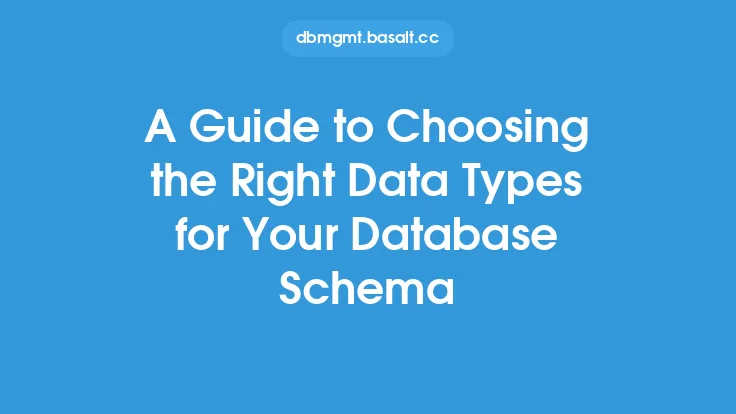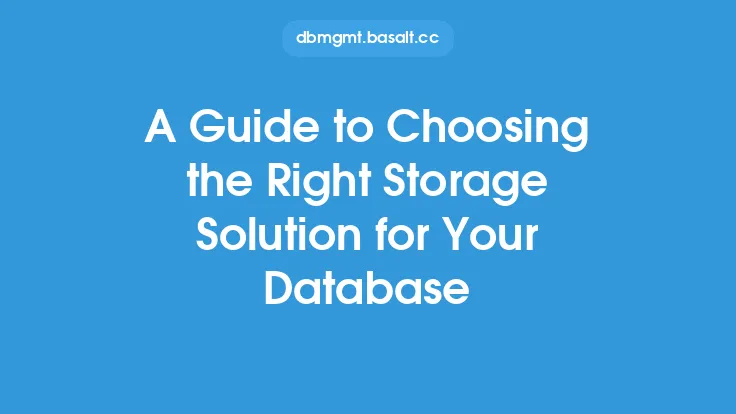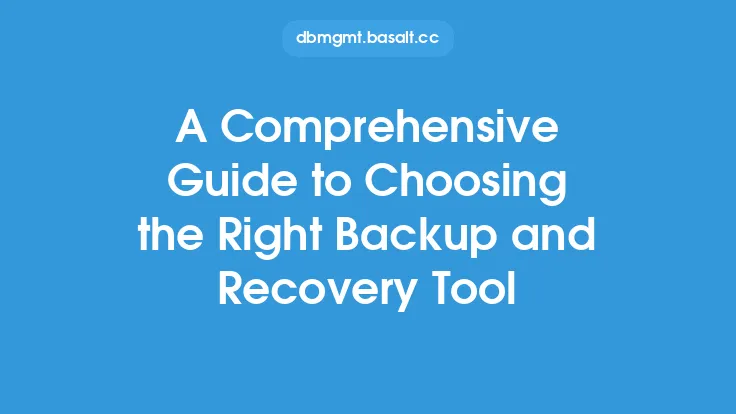When it comes to managing and analyzing large datasets, data aggregation tools are essential for extracting insights and making informed decisions. With so many options available, choosing the right data aggregation tool can be a daunting task. In this article, we will explore the key factors to consider when selecting a data aggregation tool, the different types of tools available, and the benefits of using the right tool for your needs.
Types of Data Aggregation Tools
There are several types of data aggregation tools available, each with its own strengths and weaknesses. Some of the most common types of tools include:
- Data warehousing tools: These tools are designed to store and manage large datasets, providing a centralized repository for data analysis and reporting.
- ETL (Extract, Transform, Load) tools: These tools are used to extract data from multiple sources, transform it into a standardized format, and load it into a target system, such as a data warehouse.
- Data integration tools: These tools are used to combine data from multiple sources, providing a unified view of the data and enabling more accurate analysis and reporting.
- Business intelligence tools: These tools are used to analyze and visualize data, providing insights and trends that can inform business decisions.
- Cloud-based data aggregation tools: These tools are hosted in the cloud and provide a scalable and flexible solution for data aggregation and analysis.
Key Factors to Consider
When choosing a data aggregation tool, there are several key factors to consider. These include:
- Data volume and complexity: The tool should be able to handle large datasets and complex data structures.
- Data sources: The tool should be able to connect to multiple data sources, including databases, files, and cloud-based services.
- Data transformation: The tool should be able to transform data into a standardized format, enabling accurate analysis and reporting.
- Scalability: The tool should be able to scale to meet the needs of your organization, handling large datasets and high volumes of data.
- Security: The tool should provide robust security features, including encryption, access controls, and auditing.
- User interface: The tool should provide an intuitive and user-friendly interface, enabling users to easily navigate and analyze data.
Benefits of Using the Right Data Aggregation Tool
Using the right data aggregation tool can have a significant impact on your organization, providing numerous benefits, including:
- Improved data accuracy: By aggregating data from multiple sources, you can ensure that your data is accurate and up-to-date.
- Enhanced data analysis: Data aggregation tools provide advanced analytics and reporting capabilities, enabling you to extract insights and trends from your data.
- Increased efficiency: Data aggregation tools automate many of the tasks associated with data management, freeing up staff to focus on higher-value activities.
- Better decision-making: By providing a unified view of your data, data aggregation tools enable you to make more informed decisions, driving business growth and success.
- Cost savings: Data aggregation tools can help reduce costs by minimizing the need for manual data processing and reducing the risk of data errors.
Evaluating Data Aggregation Tools
When evaluating data aggregation tools, there are several factors to consider. These include:
- Vendor reputation: Look for vendors with a proven track record of delivering high-quality data aggregation tools.
- Tool functionality: Ensure that the tool provides the functionality you need, including data transformation, data integration, and analytics.
- Scalability: Evaluate the tool's ability to scale to meet the needs of your organization.
- Security: Assess the tool's security features, including encryption, access controls, and auditing.
- User interface: Evaluate the tool's user interface, ensuring that it is intuitive and user-friendly.
- Support and training: Look for vendors that provide comprehensive support and training, enabling you to get the most out of the tool.
Implementing a Data Aggregation Tool
Implementing a data aggregation tool requires careful planning and execution. The following steps can help ensure a successful implementation:
- Define your requirements: Clearly define your data aggregation requirements, including the types of data you need to aggregate, the sources of the data, and the analytics and reporting capabilities you need.
- Evaluate tools: Evaluate data aggregation tools based on your requirements, considering factors such as functionality, scalability, security, and user interface.
- Develop a implementation plan: Develop a detailed implementation plan, including timelines, milestones, and resource allocation.
- Test and validate: Test and validate the tool, ensuring that it meets your requirements and is functioning as expected.
- Provide training and support: Provide comprehensive training and support to users, enabling them to get the most out of the tool.
Conclusion
Choosing the right data aggregation tool is a critical decision that can have a significant impact on your organization. By considering the key factors outlined in this article, evaluating data aggregation tools, and implementing a tool that meets your needs, you can unlock the full potential of your data, driving business growth and success. Whether you are looking to improve data accuracy, enhance data analysis, or increase efficiency, the right data aggregation tool can help you achieve your goals.





